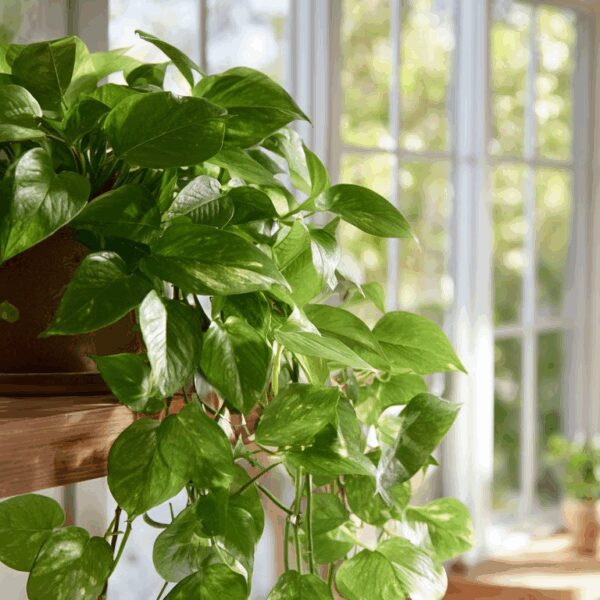If your Pothos is starting to look a little sad with its leaves fading to yellow, don’t sweat it—you’re definitely not alone. These beautiful low-light plants can be a bit dramatic when the seasons change, and sometimes all they need is a little extra TLC to perk back up.
🌱 Green Thumb Essentials in 4 Points:
- Water Wisely 💧: Overwatering can turn your pothos from a vibrant green to a sad yellow. Check the top couple of inches of soil—if it’s soggy, hold off! Let those roots breathe a bit. A thirsty plant will droop, so stay balanced!
- Light Love ☀️: These plants adore bright, indirect sunlight but can get leggy in low light. If yours is stretching, scoot it closer to the window! But watch out—too much direct sun can scorch those lovely leaves.
- Nourish with Care 🌿: As fall rolls in, give your pothos some extra TLC. A balanced liquid fertilizer like Miracle-Gro every 4-6 weeks during the growing season keeps those leaves lush and happy!
- Pot Power 🪴: Is your pothos root-bound? If roots are peeking through drainage holes, it’s time for a repot! Choose a pot that’s just a size larger and freshen up with new potting mix for that extra room to thrive.
Why Your Pothos Keeps Turning Yellow (And How to Fix It)
If your pothos is starting to look a little worse for wear, with those vibrant green leaves fading into a sickly yellow, you’re not alone. This lovely low-light plant (known scientifically as Epipremnum aureum) can be quite finicky about its conditions. As we head into October, with shorter days and cooler temperatures, it’s the perfect time to reassess your plant’s environment and care routine.
1. Watering Woes
One of the most common reasons for yellowing leaves is overwatering. And believe me, it can be easy to do! With the air cooling down now, your pothos may not need as much water as it did during the summer months. Check the top couple of inches of soil. If it feels soggy or wet, hold off on watering for a bit. On the flip side, if you notice dry soil and wilting leaves, your plant is thirsty—give it a drink! Aim for a balance; pothos like their roots to dry out slightly between waterings.
2. Light Levels
Why Your Snake Plant Is the Best Natural Air Filter for Your Bedroom
Pothos thrive in bright, indirect sunlight but can also adapt to lower light conditions. However, if they’re not getting enough light, that beautiful green color will start to fade. Try moving your plant closer to a window or under a grow light if you notice that it’s stretching toward the light source. Too much direct sunlight can scorch their leaves too, leading to yellow patches—so find that sweet spot!
3. Nutrient Deficiency
As we enter fall, many plants begin transitioning and need some extra TLC in the form of nutrients. If your pothos hasn’t been fertilized in a while, consider giving it some love with a balanced liquid fertilizer like Miracle-Gro Indoor Plant Food every 4-6 weeks during its growing season (spring through early fall). This will help keep those leaves lush and vibrant.
4. Pot Size Matters
Another reason for yellowing can be root-bound plants. If you notice roots growing out of the drainage holes or circling tightly around the inside of the pot, it may be time for a repotting session! Choose a pot that’s one size larger and use fresh potting mix to give your pothos some room to grow and breathe.
5. Pests Can Be Sneaky
Check your plant for any signs of pests like spider mites or mealybugs. These little critters can suck the life out of your pothos! Look for tiny webs or white cottony spots on the leaves. If you catch them early, wiping down the leaves with soapy water or using insecticidal soap can work wonders!
6. Temperature Troubles
Pothos prefer temperatures between 60°F and 85°F (15°C to 29°C). With cooler nights creeping in this October, make sure your plant isn’t sitting too close to chilly windows or drafts from heaters. They like their warmth but don’t appreciate abrupt temperature changes.
If you’ve ruled out these common issues but still see yellowing leaves, don’t panic! Sometimes plants just need a little time to adjust after changes in their environment. Keep an eye on them and give them some patience—and love—while they bounce back.







